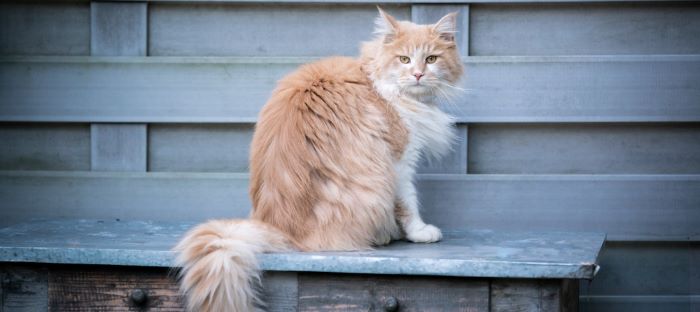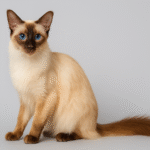Regardless of their ancestry, these cats have undeniable glamour and are sought-after pets.
Non pedigree cats with long hair are less common than their shorthaired counterparts. In some of them, the clues to their origins are obvious. A dense, woolly undercoat, stocky body, and a round, flattened face are likely to be inherited from a Persian.
The ancestry of others remains a mystery in a confusion of variable coat lengths, mixed colors, and indeterminate patterns. Longhaired house cats rarely have the extravagantly thick coats seen in the show ring, but many of them are very beautiful.
Cream and white
Cream—a diluted form of red—is an unusual color in the average house cat. This one has “ghost” tabby markings, which cat fanciers try to eliminate in pedigrees by breeding only the very palest creams.
Black
Jet-black was among the first colors to be popular in longhairs. In random-bred cats there are likely to be slight tinges of brown or tabby pattern in the coat. Black coats may have a grayish or brownish hue.
Silver and white
Rarely seen in the domestic house cat, silver is the effect of a white coat tipped with darker color at the end of each hair. Depending on their degree of tipping, pedigree silver cats are sometimes known as chinchillas.
Red-and-white tabby
Most owners of a red tabby are likely to refer to their pet as a “ginger” cat. This color is much sought-after and can often be just as deep and rich in nonpedigree cats as it is in purebreds.
Brown tabby
Long fur tends to blur tabby patterning. This cat has a semi-long coat marked with the pattern known as “classic” tabby, which on a shorter coat would appear as boldly defined, dark whorls.





